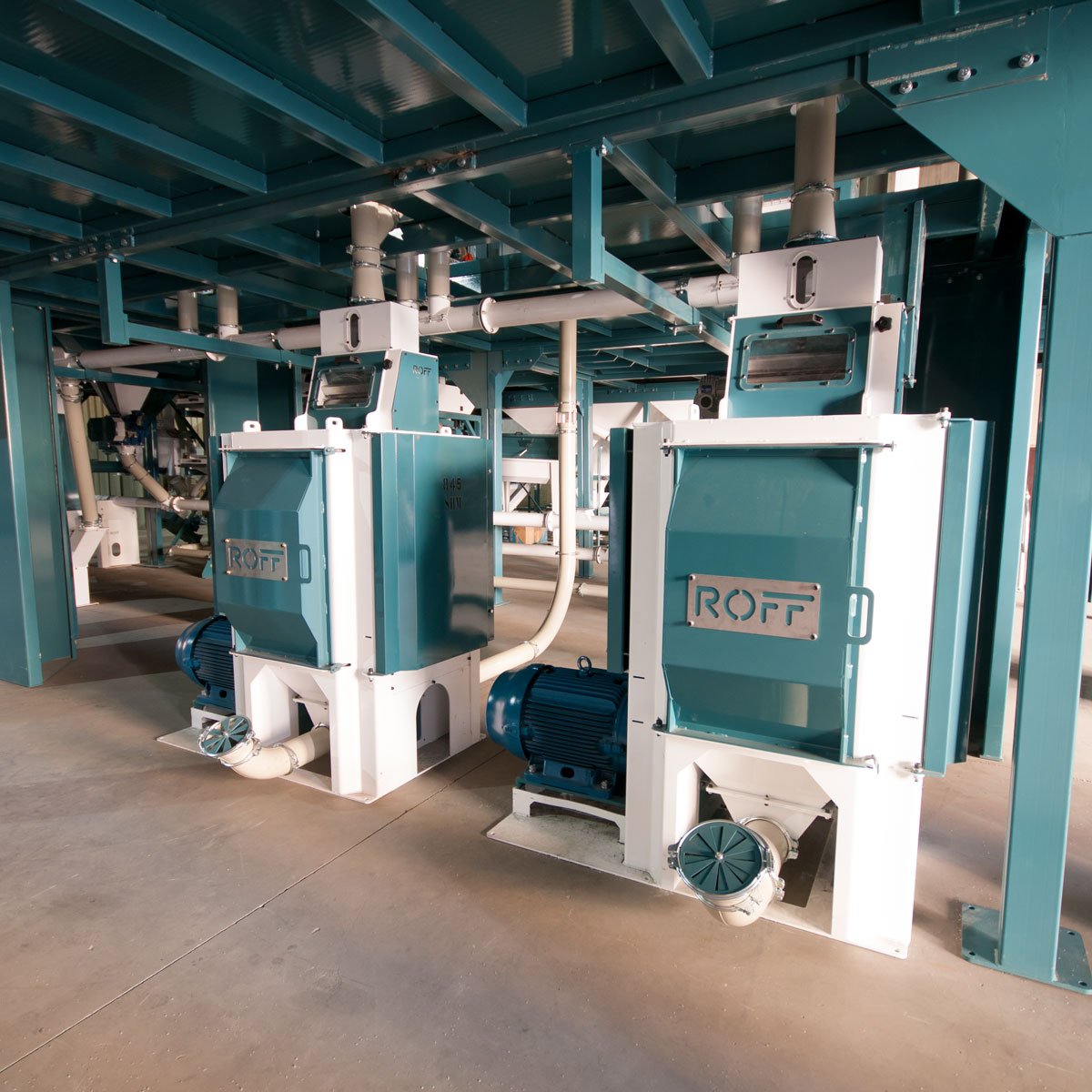Published February 3, 2022 • Updated November 4, 2025
In regions that prefer very fine maize flour, like Angola, Tanzania and Uganda, hammer mills are traditionally considered more cost-effective at producing a fine meal compared to roller mills. Roller mills, in turn, are better known for producing coarser flour. But which is the most profitable in the long run?
Choosing the right grinding technology is one of the fastest ways to lift the profit of a maize-milling business. Below we compare roller and hammer mills across the metrics that matter—power, extraction, throughput, operating cost and safety—using real data from Roff products and independent studies. We then show how combining both machines in a single flow-sheet unlocks the best of each world.
1. Energy efficiency
Electricity typically makes up 20–25% of a small mill’s running cost. Independent trials show roller mills use roughly 25–30% less kWh per tonne than hammer mills. Cutting that load means lower bills and a smaller generator or solar array.
2. Product quality and extraction
Roller mills nip and shear the kernel instead of shattering it, producing far fewer fines (<250 µm dust). The result is:
- Higher extraction – Roff customers typically gain 3–5% more saleable meal; some report up to 10%.
- Consistent granulation – Uniform particles cook evenly, reduce sieving losses and command better prices.
- Less starch damage – Lower gelatinisation helps extend shelf-life and prevents stickiness in packaging.
3. Throughput and capacity
| Metric | Roff roller mill | Roff hammer mill | What it means for you |
|---|---|---|---|
| Rated capacity | MK6D: 1 t/h | SHM 845: 2.5 t/h (fine) | Hammer mills can push higher flow, but only with more power and a wider particle spread. |
| Typical screen change | None during run | Needed when spec changes | Downtime and spare-screen costs add up on hammer mills. |
(Capacities are for maize, clean and 13–14% moisture.)
4. Maintenance and total cost of ownership
Roller flutes last 8-12 months on white maize before sharpening; screens and hammers may need monthly checks on high-volume hammer mills. Over five years, parts and energy often outweigh the sticker price, so the lower-wear, lower-kW roller mill usually wins on cost-per-ton milled even at a higher purchase price.
5. Safety, dust and ESG
Less dust means less housekeeping, maintenance, a healthier workspace and lower explosion risk. Noise levels on roller mills are much lower than on comparable hammer mills, helping plants comply with occupational-health legislation.
6. Why a hybrid flow-sheet beats either machine alone
A proven Roff recipe for refined/sifted maize meal production:
- Degermination – remove bran and germ.
- Roller mill (e.g., MK2S or MK6D) – strip residual bran, tighten PSD, boost extraction.
- Hammer mill (e.g., SHM 845) – polish the uniform stock to the ultra-fine flour preferred in markets like Angola, Tanzania and Uganda.
Because the hammer mill now receives pre-sized, low-bran stock, it can run at higher throughput and 15–20% lower amperage, slashing unit cost.
 7. 100% extraction? A case for unsifted maize meal
7. 100% extraction? A case for unsifted maize meal
In some markets, unsifted maize meal is popular due to it’s lower cost, as only the hammer mill is used to mill the complete maize kernel, effectively achieving close to 100% extraction. Many community mills around Sub-Sahara that serve low income markets make use small hammer mills, so Roff developed the SHM-U, an complete hammer mills system with an inlet capacity of up to 2.5 tons/hour.
👉 Next step: Speak to one of our sales consultants for a tailored mill best suited to your budget and market.
References
- MK2S maize roller mill specifications, Roff Milling. (Roff Milling)
- MK6D maize roller mill specifications, Roff Milling. (Roff Milling)
- Hammer 100 specifications, Roff Milling. (Roff Milling)
- SHM 845 hammer mill specifications, Roff Milling. (Roff Milling)
- “Roller mill vs. hammer mill: what’s the difference?”, RMS Roller-Grinder. (RMS Roller-Grinder)
- “Hammermills and roller mills”, Engormix technical article. (Engormix)
- “Advantages and disadvantages of particle-size reduction techniques”, CPM White Paper. (One CPM)
All extraction and cost calculations are illustrative. Always validate figures with your own maize quality, energy tariff and market prices before making investment decisions.







